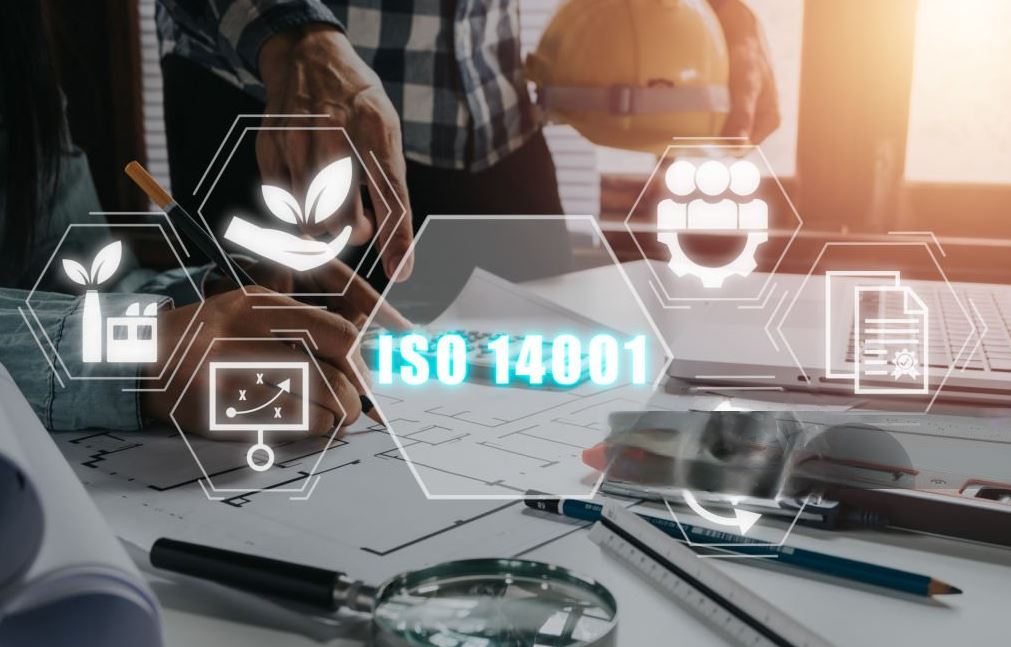Environmental Excellence: Empower with ISO 14001 Training

I. Introduction
A. Setting the Stage: The Importance of Environmental Excellence
In a world increasingly conscious of its ecological footprint, achieving environmental excellence has become paramount. From reducing carbon emissions to preserving biodiversity, businesses and organizations are under pressure to demonstrate their commitment to sustainable practices.
B. ISO 14001: A Pillar of Environmental Management Systems (EMS)
ISO 14001 stands out as a cornerstone in the realm of Environmental Management Systems (EMS). It provides a framework for organizations to establish, implement, maintain, and improve their environmental performance. Essentially, ISO 14001 serves as a roadmap towards environmental sustainability, guiding entities through the intricate landscape of eco-conscious operations.
II. Understanding ISO 14001
A. What is ISO 14001?
ISO 14001 is an internationally recognized standard that outlines the requirements for an effective environmental management system. It offers a systematic approach to identifying, managing, monitoring, and mitigating environmental impact across various sectors and industries.
B. Key Principles and Objectives of ISO 14001
At its core, ISO 14001 emphasizes a commitment to continual improvement, pollution prevention, and compliance with legal and other requirements. Its objectives include reducing environmental impact, enhancing resource efficiency, and fostering a culture of environmental responsibility within organizations.
III. The Benefits of ISO 14001 Training
A. Enhancing Environmental Awareness
ISO 14001 training cultivates a deeper understanding of environmental issues and their implications for business operations. Participants gain insights into sustainable practices, environmental regulations, and strategies for minimizing ecological footprints.
B. Improving Regulatory Compliance
By familiarizing participants with relevant environmental legislation and compliance requirements, ISO 14001 training helps organizations navigate complex regulatory frameworks with confidence. This proactive approach reduces the risk of non-compliance penalties and legal ramifications.
C. Boosting Organizational Reputation and Credibility
Achieving ISO 14001 certification signals to stakeholders, customers, and the public that an organization is committed to environmental stewardship. This enhances reputation, builds trust, and opens doors to new business opportunities with environmentally conscious partners and clients.
IV. Who Should Pursue ISO 14001 Training?
A. Environmental Managers and Officers
Environmental managers and officers play a pivotal role in implementing and maintaining ISO 14001-compliant EMS within their organizations. Training equips them with the knowledge and skills necessary to effectively oversee environmental initiatives and drive sustainable practices.
B. Sustainability Professionals
Professionals specializing in sustainability benefit from ISO 14001 training as it aligns with their broader objectives of promoting social and environmental responsibility. By integrating ISO 14001 principles into sustainability strategies, these professionals can enhance their impact on organizational sustainability efforts.
C. Corporate Leaders and Decision Makers
Corporate leaders and decision makers set the tone for environmental stewardship within their organizations. By undergoing ISO 14001 training, they demonstrate their commitment to integrating environmental considerations into strategic decision-making processes, fostering a culture of sustainability from the top down.
V. ISO 14001 Training Curriculum Overview
A. Fundamentals of Environmental Management Systems
The curriculum covers the fundamental concepts of EMS, including environmental policy development, identification of environmental aspects and impacts, and establishment of objectives and targets.
B. ISO 14001 Requirements and Implementation Guidelines
Participants learn about the specific requirements of ISO 14001 standard and gain practical insights into implementing and maintaining an effective EMS within their organizations.
C. Auditing and Certification Processes
Training delves into auditing techniques and processes for evaluating conformance with ISO 14001 requirements, preparing participants for internal audits and third-party certification assessments.
VI. Choosing the Right ISO 14001 Training Program
A. Accreditation and Certification Bodies
When selecting a training program, organizations should prioritize accredited providers recognized for their adherence to quality standards and alignment with ISO 14001 requirements.
B. Tailored Training Solutions for Different Industries
Training programs tailored to specific industries or organizational contexts ensure relevance and applicability, addressing sector-specific challenges and opportunities.
C. Delivery Formats: In-Person, Online, and Blended Learning
Flexible delivery formats accommodate diverse learning preferences and logistical considerations, offering options ranging from traditional classroom-based instruction to online and blended learning formats.
VII. Overcoming Challenges in Implementing ISO 14001
A. Resistance to Change
Resistance to change poses a common challenge in implementing ISO 14001, requiring effective change management strategies to overcome inertia and foster organizational buy-in.
B. Resource Constraints
Limited resources, both financial and human, may hinder the implementation of ISO 14001. Creative resource allocation strategies and prioritization of environmental initiatives can help mitigate these constraints.
C. Integration with Existing Processes and Systems
Integration of ISO 14001 with existing processes and systems requires careful planning and coordination to ensure alignment with organizational goals and seamless integration into daily operations.
VIII. Ensuring Long-Term Sustainability and Continuous Improvement
A. Monitoring and Measuring Environmental Performance
Regular monitoring and measurement of environmental performance indicators enable organizations to track progress, identify areas for improvement, and demonstrate tangible environmental impact.
B. Internal Audits and Management Reviews
Internal audits and management reviews serve as critical mechanisms for evaluating the effectiveness of the EMS, identifying non-conformities, and driving corrective and preventive actions.
C. Engaging Stakeholders and Building a Culture of Environmental Responsibility
Engaging stakeholders, both internal and external, fosters collaboration and collective ownership of environmental goals, while cultivating a culture of environmental responsibility and accountability.
IX. Conclusion
A. The Path to Environmental Excellence: Empowerment through ISO 14001 Training
In the journey towards environmental excellence, ISO 14001 training emerges as a powerful tool for empowerment. It equips individuals and organizations with the knowledge, skills, and mindset needed to navigate the complex terrain of environmental management effectively. By embracing ISO 14001 principles, businesses can not only meet regulatory requirements but also exceed expectations, driving positive environmental change and contributing to a sustainable future.
B. Taking the Next Steps: Implementing ISO 14001 for a Greener Future
As the global community grapples with pressing environmental challenges, the need for proactive measures has never been more urgent. Implementing ISO 14001 is not just about achieving certification; it’s about making a commitment to environmental stewardship and embracing a culture of continuous improvement. By taking the next steps towards ISO 14001 implementation, organizations can pave the way for a greener, more sustainable future for generations to come. Let’s embark on this journey together, towards a world where environmental excellence is not just a goal, but a way of life.









